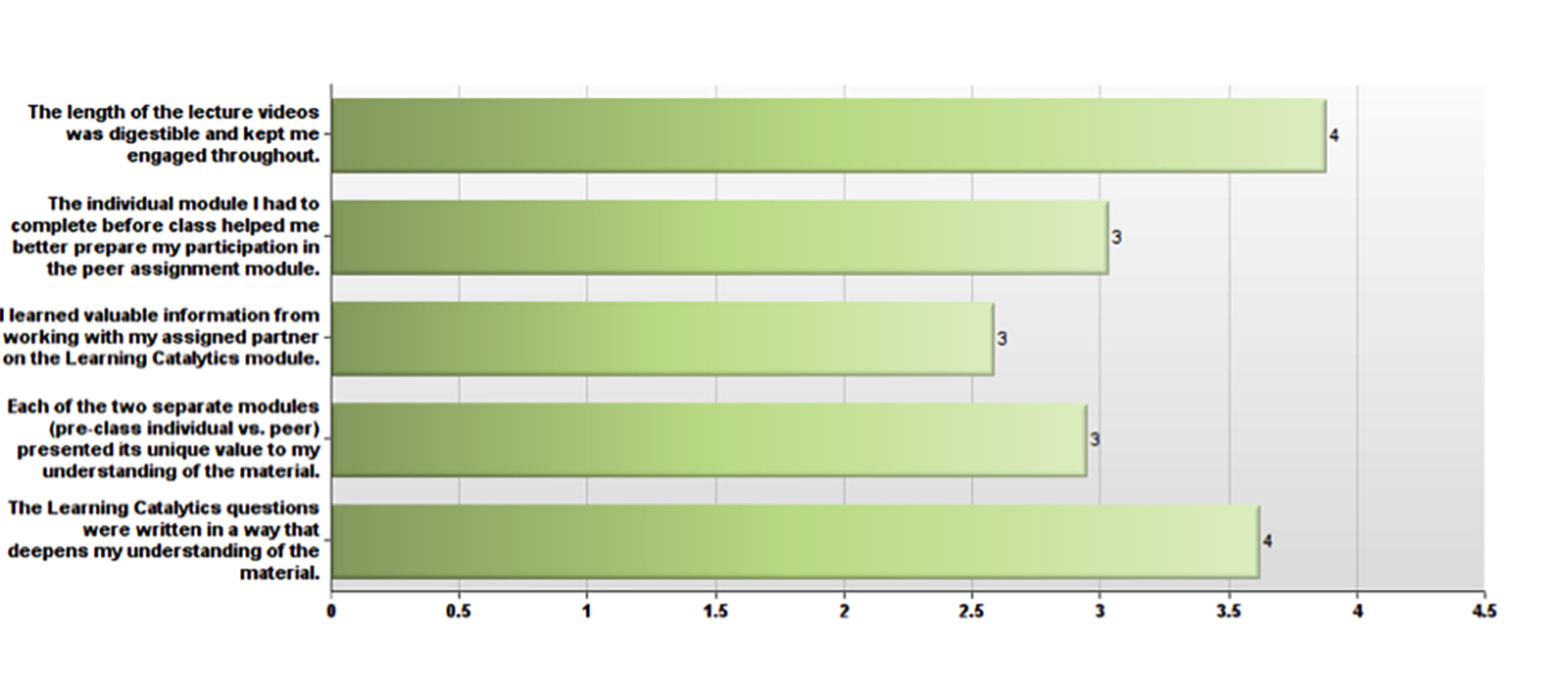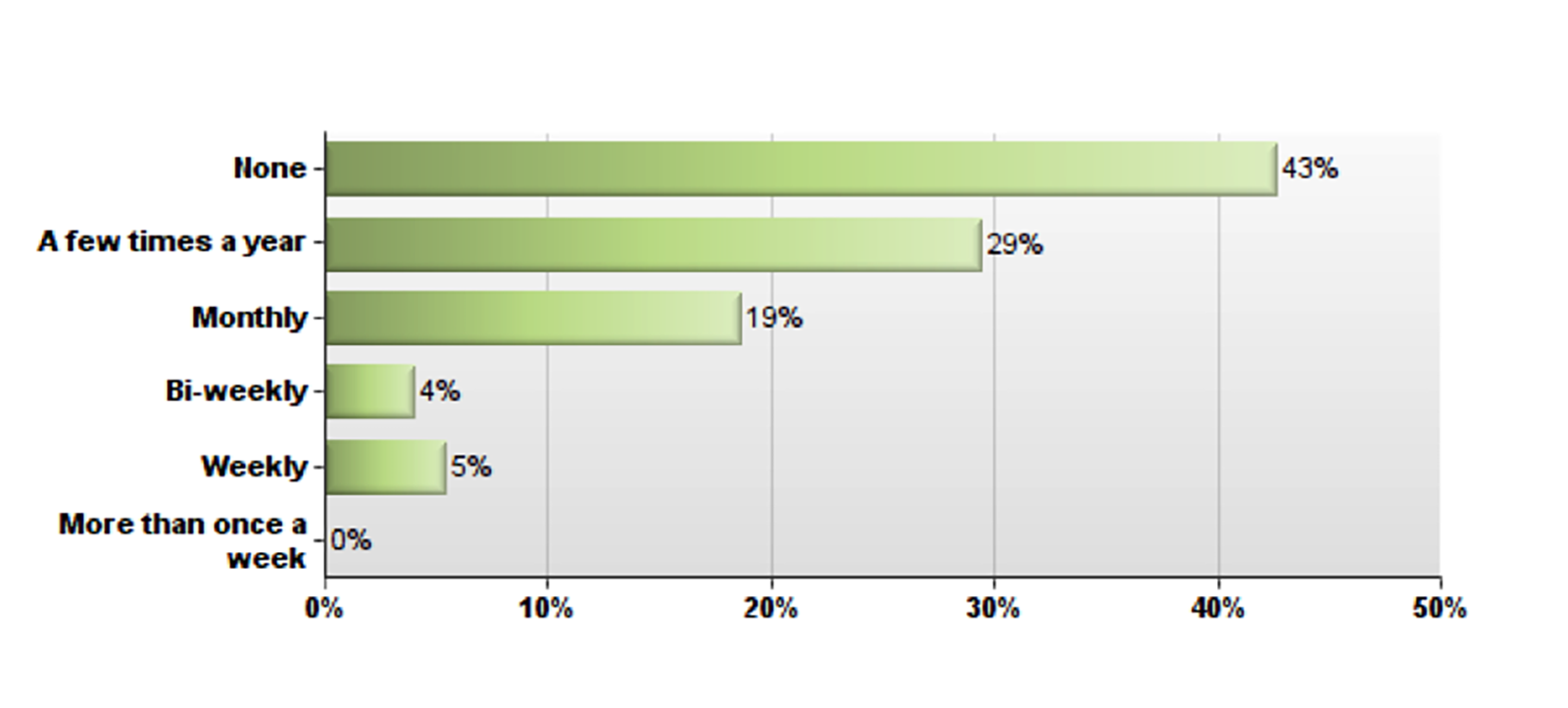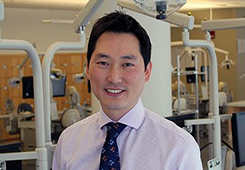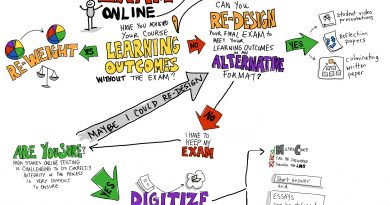An Experiment in Producing Long-Lasting Learning
Tufts School of Dental Medicine professor Sam Koo reflects on his experiment with delivering an online learning session for a 200-person large lecture on periodontology.

What was your goal of online learning, and breaking up your lecture into two parts?
The goal was to assess the potential of online learning as a way to 1) find an alternative to the standard lecture format that produces long lasting learning as opposed to remembering facts, and 2) to address the growing challenge with scheduling difficulties in the cross-program curriculum and low in-class attendance.
I separated a one-hour lecture on “Guided Bone Regeneration” into a two-part lesson taught online. Both parts were delivered through Learning Catalytics (link is external), a web-based class response tool which offers out-of-class questions and review. In Part 1, I asked students to complete pre-assigned readings, watch two short video lectures I created using Echo360 Personal Capture, and answer two short open-ended questions individually. In Part 2, students were assigned to pairs and completed two longer essay-format questions together—my goal was to generate peer discussion and help them apply their understanding of the literature. My videos were temporarily closed for review between the two parts, as I wanted them to intentionally retrieve their memory of Part 1 learning while completing Part 2.
What are your main takeaways from the student survey results?
Overall, as an instructor, it was a very enriching experience for me. It opened up my mind a bit in that, when I lecture, now I am more sensitive to student perspectives. The exercise of breaking my lecture into two short segments was a powerful learning experience for me.
Interestingly, an overall student satisfaction survey showed mixed results (a total of 75 responses). In general, students seem to appreciate the short-length video lectures and agree that the open-ended questions deepened their learning. However, the peer-to-peer learning portion needs some improvements. The major difficulties include finding an agreeable time to interact with a peer and understanding the value of peer interaction.

Also, the students had mixed feelings about the lecture being divided into two parts. From an instructor perspective, the whole rationale behind doing it separate was to give them time to refresh their memory between the two modules. But, some students wanted more immediate feedback on their answers, and hoped lecture videos would be accessible throughout the online experience.
What was the student perspective on the essay format?
We are slowly introducing essay questions as a majority of past student assessments have been done using multiple-choice questions that give students options to choose from. Essay questions are much more demanding for the students – it requires more thought process, it’s a good learning opportunity for the students but the student feedback states that they don’t want to put in that much effort. From an instructor perspective, it is good because the content will stay with them much longer, and be much more stable knowledge that you can process later on.
What will you do differently here on out?
I can see that our students are not used to this type of format. Some students would still prefer a traditional format, and if it is online, they will passively watch content and be done with it. Some appreciate this challenge; one student consulted with a resident to find an answer. As an instructor, I need to communicate more clearly about my goal in advance, and why it is important for them to make time.
If I had to do another online session, the methods I used could lead to a superior level of engagement and delivery of content. For the future, it would be nice to figure out how to open and close things and schedule them in Learning Catalytics. Additionally, we will have to work on scheduling to ensure that students have enough time to meet with their peer partners to work together so they can gain the content knowledge in a different format, more causally. Hopefully, this way the information will stay in their memories long-term.



